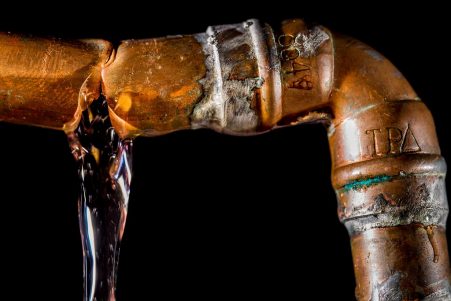Water Loss (NRW) ~ Consequences & Solutions
With the world’s attention focused on the severe lack of water over major parts of its face, a high level of water loss is one of the major challenges facing us today. This includes:
- physical losses ~ due to leaks and theft of water from the system
- commercial losses~due to unpaid bills, water that is not billed or billed incorrectly due to poor metering or poor records.
Water utilities in developing countries have some serious work to do to become efficient, profitable for their community and reduce or eliminate completely the loss of water that should be used by its citizens.
What exactly is Non-Revenue Water? It is the difference between the amount of water a utility service puts into the distribution system and the amount of water billed to consumers. NRW has a serious effect on water utilities through lost revenue, lost water resources, and increased operational costs.
When there are high levels of NRW, it reduces a utility’s capacity to fund necessary expansion of services, especially for low-income consumers. The amount of NRW is an obvious indicator of a utility’s operational and financial performance. A high level of NRW normally indicates a water utility that lacks good governance, autonomy, accountability, and the technical and managerial skills necessary to provide a reliable service.
Staggering Statistics
The total amount of NRW worldwide is estimated at 48.6 billion cubic meters per year, about half of which occurs in developing countries. Every day, 45 million cubic meters of drinking water, which could meet the needs of almost 200 million people in the developing world, are lost to the world’s water systems. In some low-income countries, this loss represents 50-60% of water supplied, with a global average estimated at 35%. If we can reduce NRW, the results are a greater amount of water available for consumption and lower the cost of operation. It can also postpone the need for investing in new sources.
The benefits of correctly managing and reducing NRW are numerous and include protecting precious water resources, improving financial performance, and reducing energy consumption. But the ability to reduce loss and increase financial standing as well as hitting the mark on SDG’s is what many municipalities
In a limited water environment, NRW management can also help increase cost-effectiveness compared to adding additional sources of potable water.
Making the solution to NRW a priority will bring incredible benefits to an existing source of life-saving water instead of looking elsewhere for more. But the benefits that arise from reducing NRW have not yet been embraced fully. Despite the decades of training and advocacy from international and industry organizations, NRW reduction still receives little attention amongst those utilities which would most benefit from it – why is that?
There are reasons, and the solutions are not easily applied. Some of those reasons include weak capacity, lack of incentives, poor financial discipline and the effort required to find and fix leaks, compared to building new treatment facilities. This has created a disease of lethargy which is now being shaken by pressures coming from climate change, water scarcity and increasing expectations of consumers.
From the list of solutions, there are some that claim to be a solution but are only a bandage. The actual cures are the ones that we focus on.
So which ones are worth acquiring and applying in your community, you ask? Good question.
Click here for the conclusion to this article.
If you would like to read more about this subject, these links below will give you great information and were used to help bring you this article:
https://www.adb.org/sites/default/files/publication/27473/reducing-nonrevenue-water.pdf
https://stateofgreen.com/en/uploads/2016/06/Reducing-Urban-Waterloss.pdf?time=1559039587

